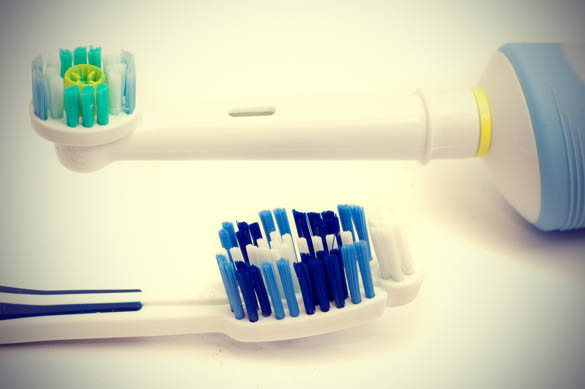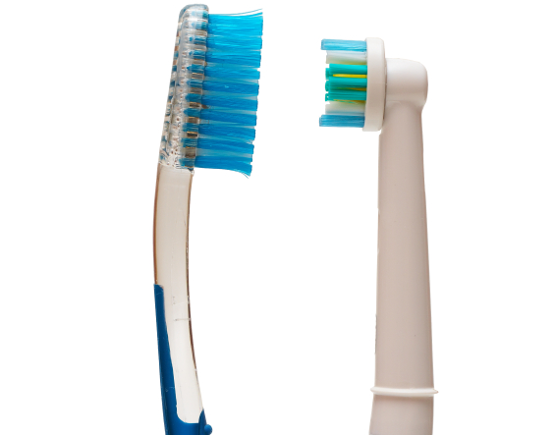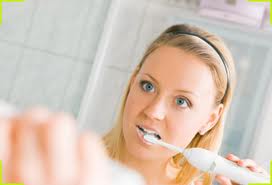
But the choice does not really fall on the categories of color, music or lights because toothbrush should serve the main purpose – to clean your teeth. The choosing contest is now between the electric and manual toothbrush.
Which is the Right Toothbrush – Manual or Electric?
Most people are guided by general recommendations from some dentists when choosing their toothbrush. These guidelines include:
-
Bristle Head and Handle Size. People are not the same size and therefore mouth size varies from person to person as well. You should look for a toothbrush that will allow enough moving space to access your entire mouth to reach the farthest of your teeth. Too large bristle head will cause you difficulty in reaching towards the back especially in the upper and lower molar region. This is where the space tightens up. For adults, toothbrush comes in large adult and regular adult size. An adult who needs a toothbrush which is smaller than the regular adult size, he should get the largest toothbrush in children’s size. It is also important to consider the length of the handle. The toothbrush must be long enough to allow access to the back of your mouth. You should also have a comfortable grip on the handle.
-
Bristle Type. There are three types of bristles – soft, medium, and hard nylon bristles. Most recommended is the soft-bristled toothbrush for safety. Hard bristles can cause damage to your teeth and gums especially if you brush hard. Also recommended are bristles that have rounded edges to protect the soft tissues in the mouth.
Introduction of the Electric Toothbrush
For many dentists, electric toothbrush was a great innovation. It’s especially helpful for people with dexterity issues who are unable to maintain their oral hygiene properly. On the lighter side, electric toothbrushes were thought to be more fun for the adults and children. Those who started using electric toothbrush started brushing longer, too. Later versions of electric toothbrush tackle other brushing issues such as less abrasive, using wave motions to clean the teeth more thoroughly, and refined shape for ease of use and comfort.
Pros of Electric Toothbrush
Electric toothbrush has a few advantages over the manual toothbrush.
-
Most electric toothbrushes have larger handles for ease of handling and holding while brushing the teeth.
-
Most electric toothbrushes have built-in timer set at 2 minutes – enough time to clean all the teeth in your mouth.
-
Most people enjoy the feeling of using an electric toothbrush which is actually good for the teeth because brushing means cleaner teeth.
-
Modify your way of brushing, from hard and aggressive to regulated. The electric toothbrush does all the work.
Cons of Electric Toothbrush
-
An electric toothbrush is more costly, way higher than manual toothbrush especially the branded and quality ones which can cost up to $150, compared to the $1 – $2 cost of manual toothbrush. When bristles wear out, you need to buy new bristles, which is another cost.
-
The toothbrush has battery so when it wanes down, you will have to buy a new battery which is additional cost.
Some studies showed that a manual toothbrush is deemed to be more effective than the electric toothbrush especially in removing plaque in your mouth.
Image Credits: Google Images
- St. Lawrence Dentistry Looks Forward To St. Patrick’s Day! - March 12, 2025
- Understanding Dental X-Rays and Radiation: What You Should Know - January 13, 2025
- Happy New Year from St. Lawrence Dentistry! - December 30, 2024











